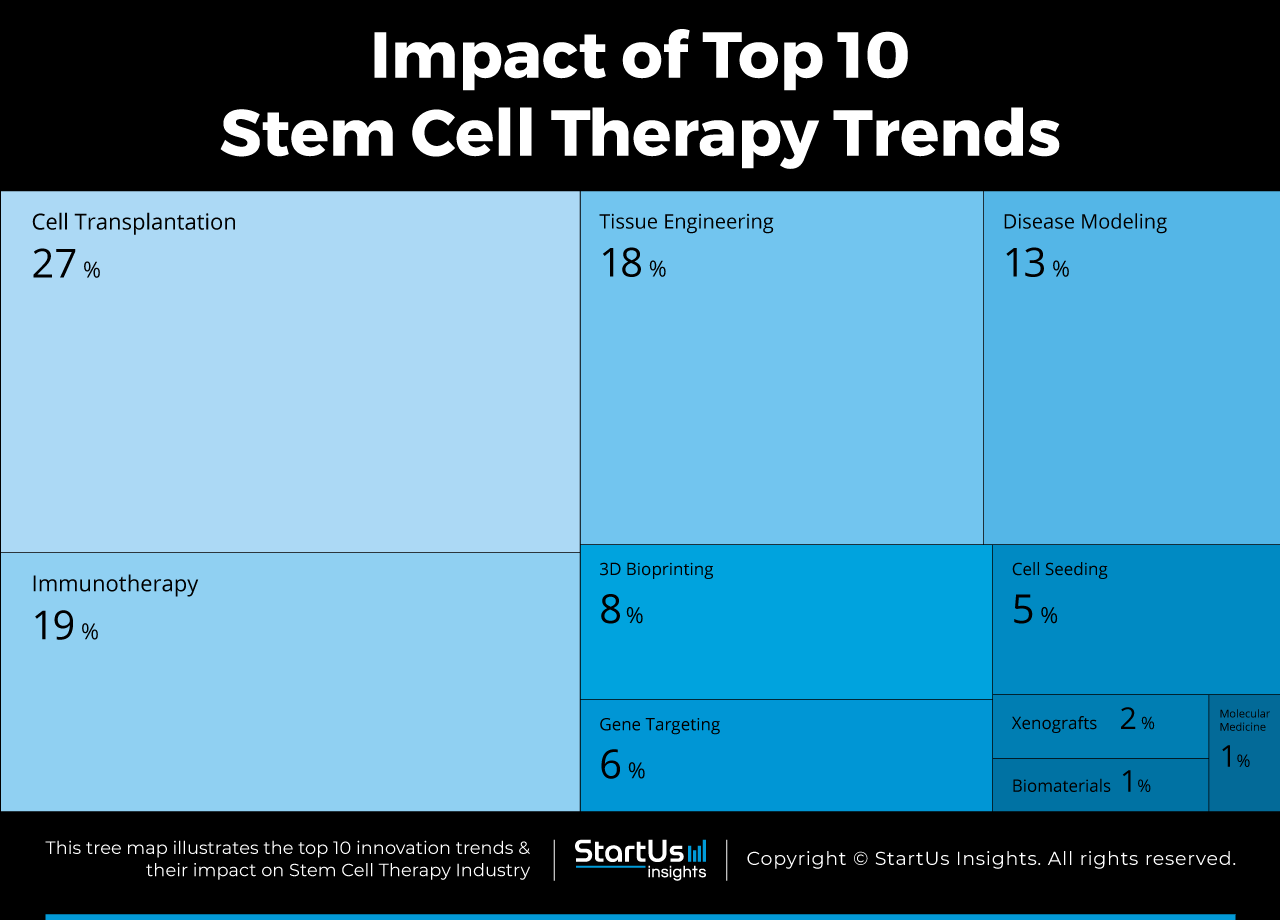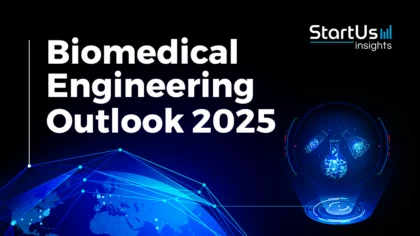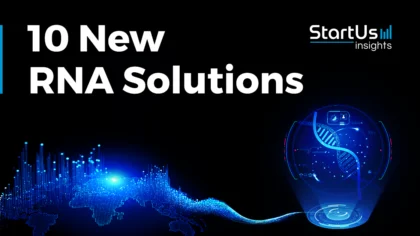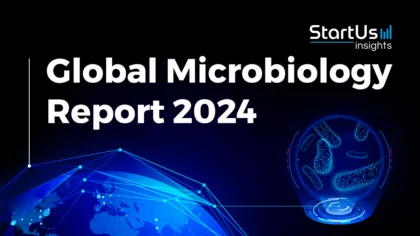Stem cell therapy leverages the regenerative capacity of stem cells to treat and potentially heal damaged tissues and organs. This method utilizes advances in gene targeting, 3D bioprinting, and similar technologies to tailor therapies. Laboratories also cultivate stem cells to guide their development into specialized cells like cardiac or neural tissues. Further, technologies such as induced pluripotent stem cells (iPSCs) and gene editing enhances precision and efficacy in regenerative treatments. Such developments advance personalized medicine and improve treatment sustainability.
Top 10 Stem Cell Therapy Trends
- Cell Transplantation
- Immunotherapy
- Tissue Engineering
- Disease Modeling
- 3D Bioprinting
- Gene Targeting
- Cell Seeding
- Xenografts
- Biomaterials
- Molecular Medicine
Innovation Map outlines the Top Stem Cell Therapy Trends & 20 Promising Startups
For this in-depth research on the Top Stem Cell Therapy Trends & Startups, we analyzed a sample of 20 global startups & scaleups. This data-driven research provides innovation intelligence that helps you improve strategic decision-making by giving you an overview of emerging technologies in the biotechnology industry. In the Stem Cell Therapy Innovation Map, you get a comprehensive overview of the innovation trends & startups that impact your company.
These insights are derived by working with our Big Data & Artificial Intelligence-powered StartUs Insights Discovery Platform, covering 4.7M+ startups & scaleups globally. As the world’s largest resource for data on emerging companies, the SaaS platform enables you to identify relevant technologies and industry trends quickly & exhaustively.

Want to explore all Stem Cell Therapy innovations & trends?
Tree Map reveals the Impact of Top 10 Stem Cell Therapy Trends
Based on the Stem Cell Therapy Innovation Map, the Tree Map below illustrates the impact of the Top Stem Cell Therapy Industry Trends in 2025. Cell transplantation and immunotherapy are at the forefront, with advancements in CAR T-cell therapies and stem-cell-derived immune cells offering therapy for cancer patients. Engineered tissues and 3D bioprinting advance organ transplantation while disease modeling provides insights into pathogenesis.
Further, gene targeting and cell seeding enhance the efficacy of stem cell therapies. Xenografts also provide improved models for human disease studies and biomaterials improve scaffolding for tissue regeneration. Lastly, molecular medicine harnesses stem cells to tackle molecular deficiencies at their root, enhancing disease diagnosis and treatment.
Global Startup Heat Map: Stem Cell Therapy
The Global Startup Heat Map below highlights the global distribution of the 20 exemplary startups & scaleups that we analyzed for this research. Created through the StartUs Insights Discovery Platform, the Heat Map reveals high startup activity in USA and Japan, followed by Switzerland.
Below, you get to meet 20 out of these 326 promising startups & scaleups as well as the solutions they develop. These 20 startups are hand-picked based on criteria such as founding year, location, funding raised & more. Depending on your specific needs, your top picks might look entirely different.
10 Top Stem Cell Therapy Trends in 2025
1. Cell Transplantation
By leveraging the regenerative potential of stem cells, stem cell therapies repair or replace damaged tissues and organs. This approach addresses challenges in treating degenerative diseases like the limited availability of donor organs and the transplant rejection. Recent innovations in stem cell therapy include induced pluripotent stem cells (iPSCs) and CRISPR. They significantly enhance the safety and efficacy of cell transplantation by enabling the creation of patient-specific cells and reducing the risk of immune rejection. Additionally, the integration of 3D bioprinting with stem cell technology advances precise tissue engineering and expands the possibilities of regenerative medicine.
ATLyphe creates Allogenic Hematopoietic Stem Cells
Swiss startup Atlyphe develops a bispecific antibody (CD117xCD3) to enhance the safety of hematopoietic cell transplantation. This antibody targets CD117 positive cells for elimination by T cell mediated cytotoxicity. It reduces severe side effects associated with allogenic transplantation. This development assists patients affected with hematologic malignancies, hereditary immunologic, metabolic, and hematologic diseases.
Celaid Therapeutics specializes in Hematopoietic Stem Cell Expansion
Japanese startup Celaid Therapeutics advances cell therapy treatments by utilizing hematopoietic stem cell (HSC) technology. This technology enables the large-scale propagation of functional blood reconstruction without using animal-derived components like albumin and cytokines. As a result, Celaid Therapeutics produces HSCs on a mass scale at reduced costs. The company focuses on developing novel cell therapies to address blood cancer, persistent blood diseases, and genetic disorders.
Jasper Therapeutics provides Transplant Conditioning
US-based startup Jasper Therapeutics develops Briquilimab that targets mast cells and stem cells for chronic disease treatment. The product is an anti-c-Kit monoclonal antibody that depletes mast cells and diseased stem cells for hematopoietic stem cell transplants and gene therapies. Thus, it treats chronic urticaria and myelodysplastic syndromes of lower to intermediate risk. It also provides conditioning treatment for stem cell transplants in disorders including sickle cell disease, Fanconi anemia, and severe combined immunodeficiency.
2. Immunotherapy
Immunotherapy enhances the body’s natural ability to fight diseases such as cancer and autoimmune disorders. This approach offers a more targeted and less toxic alternative to chemotherapy. CAR-T cell therapy and the use of genetically modified stem cells are significantly improving the efficacy and safety of immunotherapy. These advancements enable personalized treatments to improve patient outcomes and treatment success for patients with resistant or relapsed cancers. Moreover, the integration of checkpoint inhibitors with stem cell-based therapies is expanding the therapeutic potential of immunotherapy.
CELLAAX Therapy offers Cell-based Immunotherapy
Malaysian startup CELLAAX Therapy uses live human cell transplantation to cell and tissue repair, replacement, or regeneration. The startup provides stem cell therapy, cell-based immunotherapy, and secretome therapy. Stem cell therapy leverages mesenchymal stem cells (MSC) for chronic disease treatment, including specific therapies for retinitis pigmentosa and autism. Cell-based immunotherapy employs natural killer cells to fight against cancer. In addition, secretome therapy utilizes secretome biosignals to promote anti-aging and wellness. In this way, CELLAAX Therapy harnesses the regenerative capabilities of MSC to activate the body’s own repair processes and restore health to diseased, dysfunctional, and injured cells and tissues.
Notch Therapeutics provides Signaling & T Cell Differentiation
Canadian startup Notch Therapeutics enhances the impact of cellular immunotherapies, particularly in cancer treatment. The startup’s technology generates a supply of therapeutic cells derived from pluripotent stem cells that target the fundamental biology of complex diseases. Notch’s research leverages the Notch gene family, which provides cell differentiation and organ development through the Notch Signaling Pathway. This pathway assists in the development of most organs and tissues, with mutations leading to effects such as minor abnormalities in fruit flies or human congenital disorders.
Shoreline Biosciences develops an iPSC Immunotherapy Platform
US-based startup Shoreline Biosciences develops Pluripotent Stem Cell (iPSC)-derived natural killer (iNK) cells and macrophages (iMACs) platforms for cancer immunotherapy. It leverages iPSC differentiation, immune cell biology. The iPSC platform allows for multiplex editing, leading to clonal, homogeneous, and characterized products. This clonality ensures an efficient manufacturing process, impacting the future of cancer treatment.
3. Tissue Engineering
Tissue engineering provides solutions for tissue regeneration and repair to address the challenge of organ shortages and ineffective tissue repair mechanisms. By utilizing stem cells to create functional tissues in vitro, engineered tissues reduce the reliance on donor organs and transplant wait times. For instance, bioengineered skin grafts made from stem cells treat burn victims and patients with chronic wounds whereas engineered cardiac tissue treats heart failure by regenerating damaged heart muscle. This technology also employs 3D bioprinting and scaffold-based approaches to construct complex tissue structures that mimics the natural environment to promote cell growth and integration.
faCellitate manufactures Polymer Coatings
German startup faCellitate offers polymer solutions that provide a synthetic yet biologically relevant matrix applied to surfaces without chemical reactions. The inert layer of the coating, known as shield, blocks non-specific protein and cell interactions, facilitating 3D cell culture. At the same time, biotags allow for surface customization with any biomolecule to enhance cell adhesion. Also, the startup’s product, BIOFLOAT surfaces, are designed for reproducible spheroid and organoid cultures. BIOFLOAT eliminates irregular aggregations, ensures data consistency and supports cells that struggle to form spheroids on conventional surfaces. The startup’s applications include 3D cell culture, drug discovery, toxicology, and stem cell research.
Stimuliver develops Liver Supplementation
Danish startup Stimuliver develops a remote implant that supplements liver function, filtering toxins without the need for donor tissue. This technology, based on pluripotent stem cells, provides a renewable source of liver tissue. Also, it differentiates into hepatic progenitors and endothelial cells. The startup’s production process combines differentiated cells into spheres, which scale up to create functional liver tissue. The implants bypass abdominal inflammation through subcutaneous implantation. This method improves effectiveness in liver patients, offering a scalable, automated solution that reduces dependence on donor organs. Beneficiaries of this breakthrough include clinics and patients seeking alternatives to traditional liver transplantation.
4. Disease Modeling
Disease modeling technology uses patient-specific iPSCs to recreate disease environments in vitro. It allows researchers to observe disease progression and cellular responses in real time. Further, disease modeling enables the researchers or the scientists to develop targeted therapies by providing insights into genetic and molecular pathways. Also, iPSCs model conditions like Alzheimer’s and Parkinson’s disease to identify therapeutic targets. Additionally, disease modeling facilitates drug discovery and development using high-throughput compound screening in a controlled environment. By using stem cell-derived models to test treatments, disease modeling personalizes therapies to increase treatment success.
Greenstone Biosciences advances Human Induced Pluripotent Stem Cells
US-based startup Greenstone Biosciences combines artificial intelligence (AI) with human induced pluripotent stem cells (hiPSC) to develop an AI-hiPSC platform. This platform uses AI to predict drug efficacy, safety profiles, interactions, and side effects, while utilizing hiPSCs to mimic human physiology. This dual approach facilitates early testing, reduces animal testing and accelerates the drug development process.
Neurosetta promotes Neurodevelopmental Disruption Screening
US-based startup Neurosetta creates RosetteArray assays, utilizing specific cells and compounds to assess neurodevelopmental disturbances. Each assay features a gold-coated, micropatterned culture surface designed to promote the formation of brain and spinal cord rosettes. These rosettes replicate human neural tube development stages and cultivate from either cryopreserved human pluripotent stem cells (hPSCs) or neuro mesodermal progenitors (NMPs). Thus, the startup assists in applications such as screening for compound safety and modeling human diseases.
5. 3D Bioprinting
3D bioprinting creates complex tissue structures and organs to address organ shortages and enhance regenerative medicine applications. This technology uses bioinks composed of stem cells and biomaterials to print tissue layers. By integrating vascular networks within printed tissues, 3D bioprinting improves nutrient and oxygen delivery for tissue viability and function. Also, it enables the development of functional liver and kidney tissues for transplants. Moreover, 3D bioprinting facilitates personalized medicine by producing patient-specific tissues, reducing the risk of immune rejection and increasing treatment efficacy. The technology develops customized therapies and also provides platforms for drug testing and disease modeling.
Convbio develops Biomanufacturing Technology Products
Chinese startup Convbio develops biomanufacturing technologies for cell manipulation. Its product line includes the Convo Fusion Bio-Assembler, which supports different cell types, and bio-ink series that offers 3D cell culture and tissue repair. The startup leverages acoustic field bio-assembly, induced pluripotent stem cells, artificial intelligence, and biomaterials for creating functional tissues and organs.
6. Gene Targeting
Precise modifications of genetic sequences within stem cells addresses the challenge of inherited genetic disorders. Gene targeting uses clustered, regularly interspaced short palindromic repeats (CRISPR-Cas9) to correct mutations at their source and restore normal function. For instance, it is used to treat diseases such as sickle cell anemia by editing hematopoietic stem cells to produce healthy red blood cells. Further, gene targeting enhances the safety and efficacy of stem cell therapies by reducing the risk of unwanted mutations that could lead to adverse effects.
NanoGhost creates a Drug Delivery Platform
Israeli startup NanoGhost develops Nano-Ghosts (NGs), a drug delivery platform derived from the cell membranes of MSCs. The nanovesicles of NGs encapsulate therapeutics from small molecule drugs to proteins and nucleic acids. The method begins by stripping MSCs of their internal content and reducing the cell membrane to nanoscale vesicles while preserving its inherent characteristics. This process allows NGs to selectively target and deliver therapeutic payloads directly to tumors, inflammation, and injury sites, bypassing normal tissues for rapid clearance. Thus, the platform provides targeted delivery, versatile loading capacity, barrier penetration, and biocompatibility.
Cytovia Therapeutics provides Bispecific Antibodies
US-based startup Cytovia Therapeutics leverages AI to develop immune therapeutics targeting cancer. With a focus on natural killer (NK) cell therapies, it offers unedited and gene-edited inducible NK (iNK) cells, alongside genetically engineered CAR-iNK cells for enhanced targeting and killing of cancer cells. Additionally, Cytovia Therapeutics’ Flex-NK technology introduces bispecific antibodies that activate NK cells to destroy tumor cells. This platform includes its tetravalent, multifunctional antibody format to enhance binding strength and affinity for tumor antigens. This way, Cytovia Therapeutics provides off-the-shelf NK cell-based treatments to meet critical cancer therapy needs.
7. Cell Seeding
Cell seeding optimizes the distribution and integration of cells within scaffolds for effective tissue regeneration. This technology achieves uniform cell growth and differentiation with techniques like electrospinning and microfluidic systems to enhance the precision of cell placement and improve scaffold colonization. In cartilage repair, cell seeding enables the homogeneous distribution of chondrocytes on biodegradable scaffolds to promote consistent tissue growth and repair. Additionally, cell seeding technology enables complex tissue structures by allowing the co-culture of different cell types for replicating the native cellular environment. Advanced imaging techniques further monitor cell distribution and viability to ensure that seeded cells maintain functionality and integrate effectively with host tissues.
SEED Biosciences creates Automated Pipetting Robot
Swiss startup SEED Biosciences introduces DISPENCELL, an automated pipetting robot designed for single-cell seeding. Its sensing tip comes with a coulter counter technology to ensure rapid identification of single cells in wells. Thereby, it detects the electrical signatures of cells passing through. Also, it offers traceable proof of monoclonality, with instant reporting capabilities, assisting researchers to isolate individual cells for analysis. Further, DISPENCELL’s pipetting preserves cell integrity and viability with high cloning efficiency. It finds applications in cell line development, monoclonal antibody screening, rare cell isolation, and CRISPR-mediated gene editing.
Semarion manufactures Cell Microcarriers
UK-based startup Semarion offers a SemaCyte cell microcarrier platform that accelerates cell assaying workflows. This technology enables the movement and freezing of cells while maintaining their adherent morphology, introducing flexibility, speed, and miniaturization into drug discovery workflows.
In addition, the startup also offers SemaPlex Multiplexing Platform and SemaCyte Starter Kit. SemaPlex Multiplexing Platform enables the optical barcoding and pooling of adherent cells, reducing the time and cost associated with cell panel screens. The SemaCyte Starter Kit moves cells to achieve multiple experimental endpoints. It allows the use of adherent assay-ready cells within an hour from thawing and dispensing fewer cells per well while still retaining high local confluency. Together, these products streamline cell assay workflows.
8. Xenografts
Xenografts utilize genetically modified animals to produce organs and tissues compatible with the human immune system. This reduces the risk of rejection and expands the availability of transplantable materials. In cardiac research, xenografts provide a model for studying human heart diseases by using porcine heart tissues that mimic human physiology.
Moreover, immunosuppressive strategies when used with xenografts prevent immune rejection and enhance the survival and integration of transplanted tissues. These advances enable bioartificial organs that combine animal-derived tissues with biocompatible scaffolds to create functional organ substitutes. Thus, xenograft methodologies assist with organ donation and support the advancement of regenerative medicine.
Single Cell Discoveries innovates Immuno-oncology Therapies
Dutch startup Single Cell Discoveries develops a single-cell sequencing platform, SORT-seq to analyze single-cell transcriptomics efficiently. This method, ideal for low cell counts and fluorescence-activated cell sorting (FACS) sorted populations, utilizes 384-well plates.
Further, the startup offers VASA-seq, a single-cell RNA sequencing method to analyze non-coding RNA and complete transcriptomes. This technique allows for full-length and total RNA sequencing. In addition, it uses spatial transcriptomics method to provide insights into spatial gene expression and histology for studying cell localization and cell-cell interactions.
Invivocue advances Cell Line-derived Xenografts
Singaporean startup Invivocue develops six humanized rodent models. Its Human Immune System Mice (HiMice) possesses a standard human immune system. The Myeloid Enhanced HiMice include human myeloid lineage cells such as granulocytes, monocytes, dendritic cells, and specific T-cell subsets. Additionally, the NK Cell Enhanced HiMice, boosted with NK cells, assists in studying NK cell-mediated responses.
Further, the PBMC Humanized Mice model incorporates mature human T-cells, catering to research requiring detailed analysis of T-cell functions. For studies focusing on liver diseases or liver-mediated drug metabolism, the Human Liver Chimeric Mice (HepMice) features a human liver system. Lastly, the Dual Humanized Mice model combines human immune and liver systems, offering a platform for more complex biopharmaceutical research. In this way, leveraging extensive expertise in both in vitro and animal disease models, including wild-type and humanized mice, Invivocue assists in drug discovery and development.
9. Biomaterials
Biomaterials provide scaffolds and matrices that mimic natural tissue architecture to support cell growth and tissue regeneration. In bone regeneration, biomaterials like hydroxyapatite and collagen-based scaffolds improve the integration of osteogenic stem cells to promote bone healing and repair. Additionally, biodegradable polymer-based controlled release systems deliver growth factors and cytokines alongside stem cells. Smart biomaterials further optimizes the therapeutic efficacy of stem cell treatments with targeted delivery and activation. As biomaterials enable precise engineering of tissue constructs, it treats conditions such as spinal cord injuries and cartilage defects.
Amphix Bio develops Supramolecular Therapies
US-based startup Amphix Bio develops supramolecular therapies to harness the molecules for signaling cells and initiating regenerative processes. Its supramolecular peptide nanofiber delivers biological signals to stimulate cell-regulated repair and regeneration in tissues damaged by injury, disease, or aging. These biodegradable, customizable nanofibers offer applications including the restoration of bone, cartilage, muscle, cardiovascular tissues, and neural regeneration in the brain and spinal cord.
The startup also emulates the structural and dynamic properties of natural tissues targeting applications such as enhancing spine fusion to alleviate back pain. It develops polymer nanofiber composites for cartilage regeneration to reduce joint pain, and formulate strategies for spinal cord repair to counter paralysis from traumatic injuries.
Regenera offers Sub-acute Spinal Cord Injury Repair
Swiss startup Regenera provides a treatment approach for subacute spinal cord injuries. Its proprietary method synergizes biomaterials with stem cells to intervene after the initial anti-inflammatory therapy during post-traumatic stabilization surgery. This strategy employs injectable, resorbable hydrogel, SpinoSave, as a delivery system for autologous stem cells.
Moreover, placed adjacent to the lesioned area of the spinal cord, the stem cells function paracrinally to promote tissue repair and regeneration. This local grafting of stem cells, housed within the hydrogel, supports and enhances the plasticity of the surrounding tissue. Thus, Regenera guides the damaged spinal cord towards self-regeneration and restores its functionality for post-injury recovery.
10. Molecular Medicine
Molecular medicine enables precise manipulation of cellular processes using gene editing and RNA interference. They correct genetic mutations in stem cells and treat genetic disorders like cystic fibrosis and muscular dystrophy. Researchers employ CRISPR-Cas9 to modify stem cell genomes for developing therapies that directly target disease-causing genes. The use of iPSCs with molecular medicine creates patient-specific cell lines to reduce the risk of immune rejection and increase treatment precision. By creating stem cell-derived organoids, molecular medicine allows for the study of organ-specific diseases in vitro. This provides insights into conditions like liver fibrosis and pancreatic dysfunction.
Progenicyte offers Low-molecular-weight Compound
Japanese startup Progenicyte focuses on nerve regeneration by employing low-molecular-weight compounds. These compounds amplify the body’s own neural stem cells, thereby bypassing the need for cell transplants. The startup’s compound proliferates neural stem cells without direct administration to the brain. Further, the compound traverses the blood-brain barrier, allowing it to reach brain cells easily. This facilitates treatment through oral administration, simplifying the delivery method. The therapeutic discovery is underscored by its application in Parkinson’s disease in animal models.
Discover all Stem Cell Therapy Trends, Technologies & Startups
In stem cell research, current trends merge advanced technologies with the inherent potential of stem cells. They enable novel medical interventions by promoting regenerative medicine and reducing immune rejection. These trends lead to more effective and personalized patient care while minimizing ethical concerns and optimizing therapeutic outcomes.
The Stem Cell Therapy Trends & Startups outlined in this report only scratch the surface of trends that we identified during our data-driven innovation & startup scouting process. Identifying new opportunities & emerging technologies to implement into your business goes a long way in gaining a competitive advantage.









